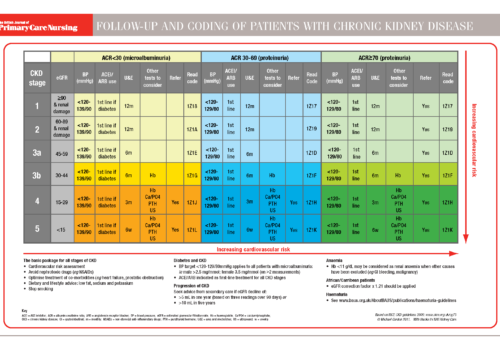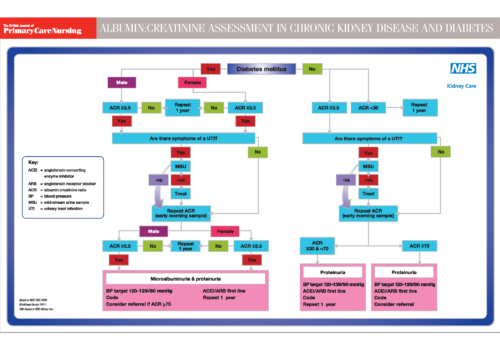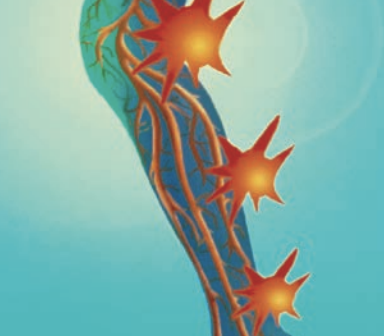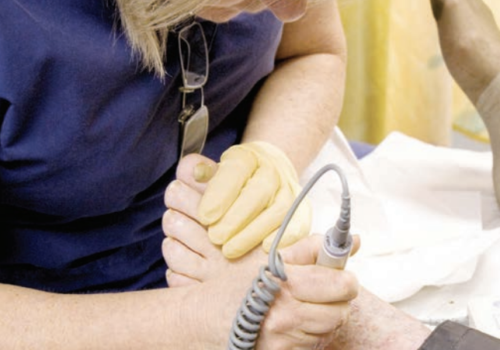UK guidelines recommend hands-only cardiopulmonary resuscitation (CPR) as an option for untrained people, or when ventilation is difficult. But standard CPR with ventilation remains best practice, and it is vital to ensure that everyone in the practice knows how to use basic life support to save a patient’s life after cardiac arrest.
Back to Basics: Follow-up and coding of patients with chronic kidney disease
Narrowing the heart health gap in severe mental illness
Deaths from cardiovascular disease have fallen over the last 20 years but people with schizophrenia and bipolar illness have not shared in these benefits. At the end of last year the first National Audit of Schizophrenia highlighted important deficiencies in management. A systematic care pathway, and straightforward screening, treatment and follow-up in primary care could reduce the continuing health inequalities experienced by people with severe mental illness.
The portfolio diet: healthier lipids in the bag?
Lifestyle modification for people at high cardiovascular risk includes positive changes to their diet. The portfolio diet is a new approach to lowering cholesterol that builds on a conventional cardioprotective diet by including specific foods that are known to target abnormal lipids.
Editorial
It is commonly accepted that nurses are better than doctors at following guideline-based protocols. Protocols have a number of benefits. They provide us with a structured approach to the consultation and added confidence in clinical management. Following a protocol also means that patients are more likely to be offered evidenced-based therapies. But familiarity with practice protocols does have its drawbacks when they have to be revised when new guidelines are published.
Back to Basics: Albumin:creatinine assessment in chronic kidney disease and diabetes
ALBUMIN:CREATININE ASSESSMENT IN CHRONIC KIDNEY DISEASE AND DIABETES
Introducing dapagliflozin for type 2 diabetes
Dapagliflozin (Forxiga) is the first in a new class of oral antidiabetic drug that has been given the go-ahead for marketing in Europe, including the UK. Described as a sodium glucose cotransporter 2 (SGLT2) inhibitor, this new preparation works on the kidneys to lower blood glucose. What does this new drug have to offer and how can it potentially help our patients with type 2 diabetes?
Need a break? Advising patients on drug holidays
Acute kidney injury (AKI) is becoming increasingly common. Patients at greatest risk are the elderly with chronic kidney disease (CKD) and other long-term conditions such as hypertension, diabetes and cardiovascular disease. AKI carries a poor prognosis yet 30% of cases are preventable. In primary care we can help prevent AKI by empowering patients to take drug holidays—that is, temporarily stopping medications that become harmful to the kidneys during episodes of acute illness.
Chronic kidney disease: Advice for when you become unwell
Dementia: Making a difference in primary care
Dementia is a term used to describe a syndrome that can be caused by several illnesses, but the result is a decline in a person’s abilities to function socially, mentally and in relation to the everyday activities of living. The condition is having an increasing impact on individuals, families and care services as the UK population ages. However, practice nurses can help make the experience of living with dementia more positive for the patient and their families or carers.
Taking the mystery out of peripheral arterial disease
Peripheral arterial disease (PAD) forms part of the same generalised vascular disease as coronary heart disease and cerebrovascular disease. Recent National Institute for Health and Clinical Excellence (NICE) guidelines emphasise the importance of a standardised approach in primary care. The aims of this article are to provide an update for practice nurses, and to highlight the importance of asymptomatic PAD as an independent risk factor for cardiovascular morbidity and mortality.
Get to grips with the ankle brachial pressure index
Peripheral arterial disease (PAD) has had a lower profile than other vascular diseases, but it is moving up the agenda following recent publication of guidelines from the National Institute for Health and Clinical Excellence (NICE). Take a look at NICE’s priorities for implementation, and you will see that using the ankle brachial pressure index (ABPI) to check for PAD is set to become part of routine cardiovascular risk assessment in primary care.
























